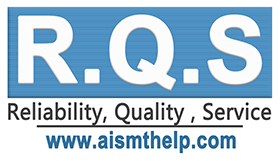Basic elements of SMT process
The basic elements of the SMT process include screen printing, dispensing, mounting, curing, reflow soldering, cleaning, testing, and repair.
Screen printing: Its function is to leak solder paste or patch adhesive onto the PCB pad, preparing for the welding of components. The equipment used is a screen printing machine (screen printing machine) and SMT sheet steel mesh, located at the front end of the SMT production line.
Glue dispensing: It is used to drop glue onto the fixed position of the PCB, and its main function is to fix components onto the PCB board. The equipment used is a dispensing machine located at the front end of the SMT production line or behind the testing equipment. Mounting: Its function is to accurately install surface mounted components to the fixed position of the PCB. The equipment used is a placement machine located behind the screen printing machine in the SMT production line.
Curing: Its function is to melt the patch adhesive, thereby firmly bonding surface mounted components and PCB boards. The equipment used is a curing furnace located behind the SMT placement machine in the production line.
Reflow soldering: Its function is to melt the solder paste and firmly bond surface mounted components to the PCB board. The equipment used is a reflow soldering furnace located behind the SMT placement machine in the production line.
Cleaning: Its function is to remove harmful welding residues such as soldering flux from the assembled PCB board. The equipment used is a cleaning machine, and the location can be fixed, online, or offline.
Detection: Its function is to detect the welding quality and assembly quality of the assembled PCB board. The equipment used includes magnifying glass, microscope, online tester (ICT), flying needle tester, automatic optical inspection (AOI), X-RAY inspection system, function tester, etc. The location can be configured at a suitable location on the production line according to the needs of testing.
Repair: Its function is to rework the PCB board that has detected a fault. The tools used are soldering iron, repair workstation, etc. Configured anywhere in the production line.


